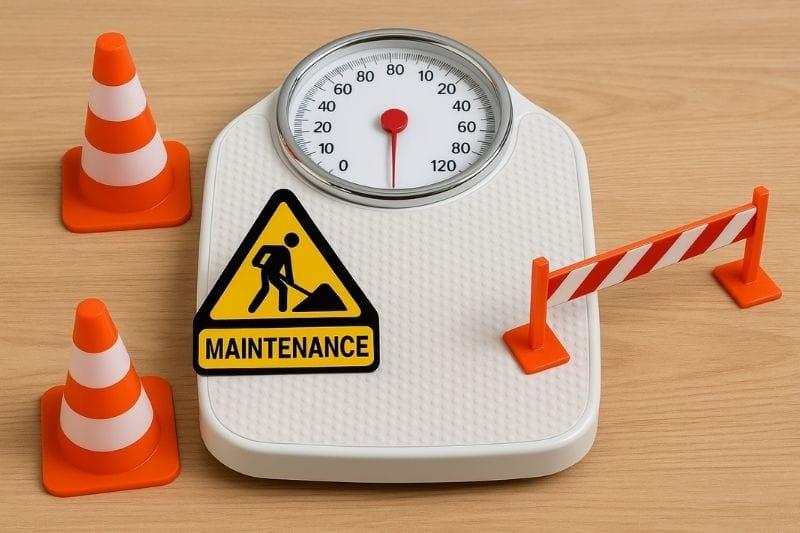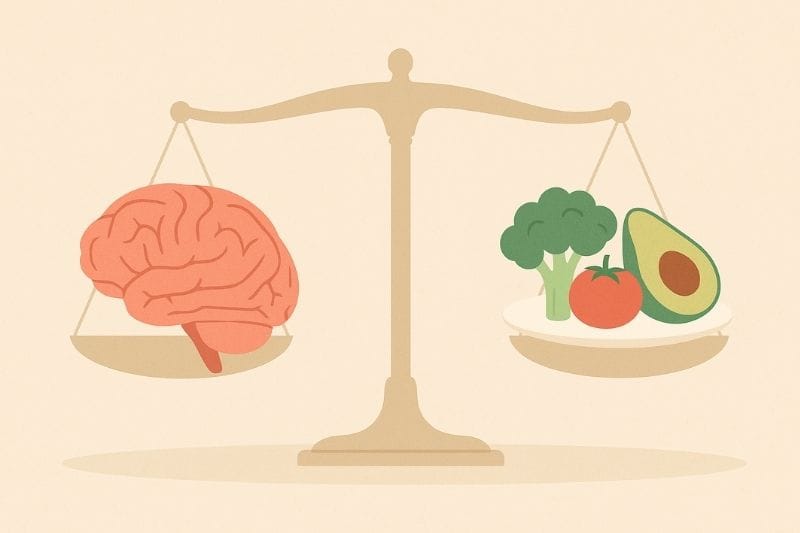Do you really need to count calories forever to keep weight off? The short answer is no. Calorie counting is a tool you can use to learn how food choices and portion sizes affect your body. Once you’ve built that awareness, you can usually maintain weight without tracking every single detail.
The real goal is not to log food for life but to use tracking as a way of learning what works for you. From there, habits, structure and routine take over – and that’s how long term maintenance becomes possible.
Let’s jump into more detail…
Why Calorie Tracking Works
Calorie counting is effective because it shows you what is really happening. Most people underestimate their food intake. A drizzle of oil, a few biscuits or a handful of crisps all add up quickly. Tracking makes those hidden calories visible and helps you understand why your weight might be stuck.
It also teaches you what a portion actually looks like. After a few weeks of tracking you can spot the difference between 30g of oats and 60g, or what 200 calories of nuts really looks like. That awareness stays with you even once you stop using an app.
How Maintenance Calories Work in Real Life
Your maintenance calories are the number of calories you need to eat each day to keep your weight the same. They are not a fixed number for life. They change with your age, your activity, your muscle mass and even how much you move day to day.
Think of maintenance as a moving target within a range rather than one exact figure. If you are more active, you burn more. If you are less active, you burn less. That is why maintenance feels flexible.
The important thing is to know roughly where your range is. If you know you hold weight steady at around 2,200 calories a day, you can use that knowledge to guide your eating habits without logging every detail.
Are Maintenance Calories the Same as BMR or TDEE?
This is where confusion often creeps in. Your BMR is your basal metabolic rate. That is the number of calories your body needs to stay alive at rest. Your TDEE is your total daily energy expenditure, which includes your BMR plus movement, training and daily activity.
Your maintenance calories are effectively the same as your TDEE. They represent the number of calories you need to eat to keep your weight the same with your current lifestyle. They are higher than your BMR because they include all your activity.
Can Maintenance Calories Change Over Time?
Yes. Your maintenance level is not fixed. If you gain or lose weight, build muscle, change jobs or switch training routines, your energy needs will change. Many people find they can eat more when they are training regularly, but if life gets busy and movement drops, their maintenance level falls.
This is why it is useful to keep an eye on your body weight trends rather than fixating on a number. If your weight is steady, you are at maintenance. If it creeps up, you are above it. If it drifts down, you are below it.
Using What You Learned from Tracking
One of the biggest advantages of calorie tracking is that it trains your eye. You can now estimate portion sizes far better than before. You know roughly how many calories your usual meals fall into. This awareness makes it possible to maintain weight without logging.
In my experience working with clients, this is where the real shift happens. I’ve seen people go from tracking every bite to trusting their portion sense and still staying stable. That transition doesn’t happen overnight, but once it does, you feel more confident with flexibility, not fear of slipping.
Here are some ways to apply what you have learned:
- Use portion guides. A palm of protein, a fist of carbs, a thumb of fats and plenty of vegetables is a simple balance for most meals.
- Keep protein high. This helps you stay full and makes it easier to avoid overeating later.
- Stick to regular meals. Eating at consistent times keeps appetite steady.
- Save treats for when you really want them. You do not need to cut out chocolate or takeaways, but enjoying them in moderation keeps things balanced.
- Stay active. Walking, cycling, running or strength training all increase your daily burn and give you more flexibility.
Can You Build Muscle at Maintenance Calories?
Yes, but it takes patience. If you are eating at maintenance and training with resistance, you can slowly build muscle while keeping body fat stable. It will not be as fast as eating in a calorie surplus, but it is possible, especially for people who are new to strength training or returning after a break.
Building Confidence in Yourself
The step that matters most is learning to trust your habits. You will not get everything perfect. Your weight may fluctuate from week to week, but what counts is the trend. If your weight is broadly steady and you feel healthy, you are maintaining successfully.
Many people dip back into calorie tracking for a week or two if they feel things drifting. This is not failure, it is just a way of checking in and resetting awareness. Then you go back to living without logging everything.
FAQs
Do you need to count calories forever?
No. Calorie tracking is a short term tool. Once you have learned what works for your body you can maintain weight without it.
What are maintenance calories?
They are the number of calories you need to maintain your current weight. This usually matches your total daily energy expenditure, not just your BMR.
Are maintenance calories the same as BMR?
No. BMR is the number of calories your body needs at rest. Maintenance is higher because it includes activity and movement.
Are maintenance calories the same as TDEE?
Yes. TDEE is another way of describing maintenance calories. Both represent the calories you need to keep your weight stable.
How many calories should I eat to maintain weight?
It depends on your age, weight, muscle mass and activity. For some people it is around 1800. For others it is over 2500. The best sign you are at maintenance is when your weight stays steady.
Can maintenance calories change over time?
Yes. Your needs shift with weight changes, age, muscle mass and activity levels.
Can you build muscle at maintenance calories?
Yes, but progress will be slower than in a surplus. Consistent resistance training and high protein intake make it possible.
How do maintenance calories work?
They are the balance point where energy in matches energy out. If you eat above them you gain weight. If you eat below them you lose weight.
Counting calories forever is not the goal. The real win is using it to build awareness so that you can move on and maintain with habits and structure. Once you know what your body needs, you can eat with confidence and flexibility without relying on an app.
If you want help building those long term habits, my online weight loss coaching can give you the structure and support to maintain your results with confidence.




